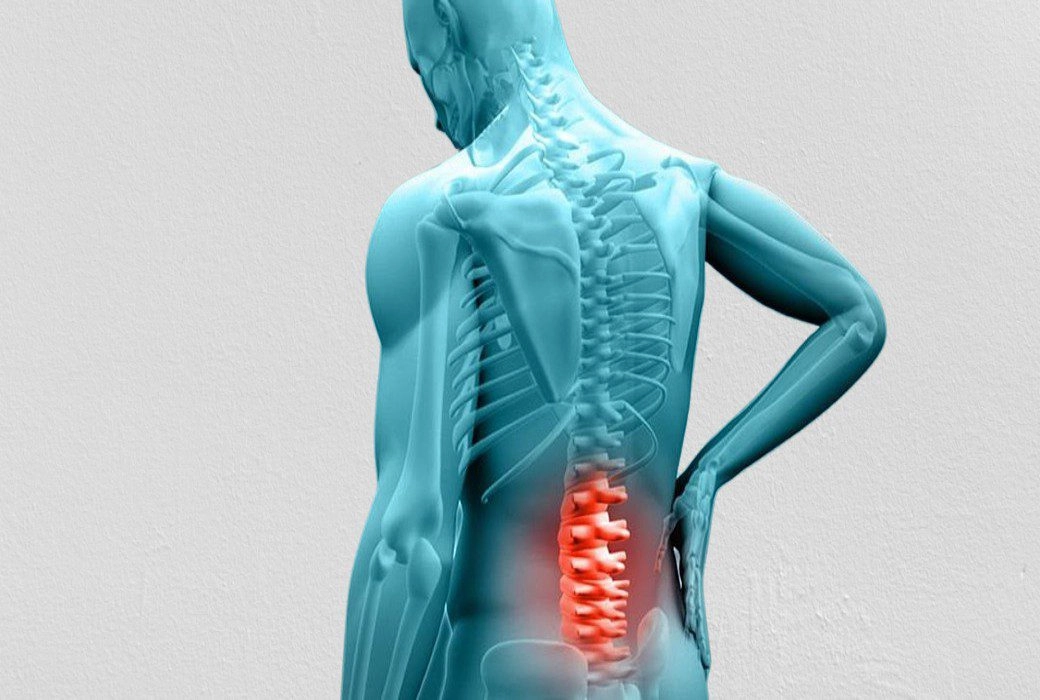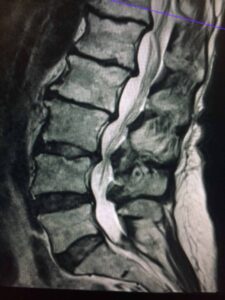What is Considered a Large Herniated Disc?

Herniated discs are a frequent problem that can cause excruciating side effects. While they’re common, they can sometimes be difficult to treat, especially if they’re large.
A large herniated disc is considered to be over 3mm. Its size can make the disc slip out of place and start pressing on nearby nerves. Over time, this can cause muscle weakness and nerve damage.
If you’d like to learn more about large herniated discs, you’ll want to keep reading. Below you’ll discover important information about this issue and how you can treat it.
Is a 5mm Disc Herniation Large?
A 5mm disc herniation is large, but it can get bigger over time. Sometimes, this problem can result in an 18mm extrusion.
Can an X-Ray Show a Herniated Disc?
X-rays can’t detect herniated discs. This is because they mainly highlight calcium in your bones. Because discs and the nearby nerves lack calcium, they don’t show up on x-rays. However, they can help doctors see if another problem, such as a tumor, might be causing the issue.
What Does a Herniated Disc Look Like on an MRI?
A herniated disc will appear on an MRI. This process will identify the position of the disc. It will also give a medical professional a closer look into the bone and surrounding nerves. This way, they can better understand the problem and determine the best way to treat it.
Unlike an x-ray, an MRI uses radio waves and magnetic fields to produce images. These strong components will make the protons in the affected area line up. The MRI will then take a picture of this.

Is a Herniated Disc the Same as Degenerative Disc Disease?
No, a herniated disc isn’t the same as degenerative disc disease. A herniated disc is due to a disc being pulled out of place. If treated correctly, a herniated disc will usually heal without surgery in about six weeks.
Degenerative disc disease is when the cartilage and tissues around the disc wear out. This causes the discs to slowly slide out of their normal position.
Is a Herniated Disc a Permanent Disability? Is a Herniated Disc Considered Serious?
In some cases, a herniated disc can result in a permanent disability making it a very serious condition. This isn’t common though and is usually because the problem wasn’t quickly fixed.
However, it can become permanent and cause long-term side effects, especially if it blocks nerve impulses, especially in your lower back. If this is the case, you might notice extreme numbness. You might also lose the ability to hold your bladder.
To help a medical professional understand how bad the herniated disc is, you might be asked to undergo a few tests. These include a nerve conduction study and electromyography.
Nerve Conduction Study
A nerve conduction study records electrical impulses in your nerves. It does this with the help of electrode patches that are placed on various bodily areas. During the study, different intensities will be sent to the patches. Sometimes, this could be a little painful, but it will help medical professionals understand the health of your nerves.
Electromyography
Electromyography is similar to a nerve conduction study but instead uses needles. After electrode patches are placed around your body, small needles will be pressed into a nearby muscle. The patches will then record the reaction of your nerves.
How to Treat a Large Herniated Disc?

Herniated discs can be painful, especially if they’re large. Here are a few natural methods you can use to treat it.
1) Visit a Physical Therapist
Physical therapy can be very useful in combating herniated disc symptoms. This option will slowly help you recover by using equipment and stretches to strengthen your body.
One exercise they might suggest is water therapy. Many times, water can relax your body. Its buoyancy also prevents you from putting pressure on your spine. This allows you to stay flexible but will avert strain and pressure on the herniated disc.
To ensure you can keep moving, an Anchorage physical therapist will usually give you small exercises to do at home. It’s important to be consistent with these as they will help you recover faster.
2) Use Chiropractic Care
Visit a local chiropractor to fix your herniated disc because unlike a physical therapist who focuses on retraining the body, a chiropractor works on fixing the musculoskeletal problem itself.
Your chiropractor will usually ask you a few questions about your ailment and then request that an x-ray be taken if it hasn’t already been. Once this is done, they’ll get a better understanding of the scope of your problem and how they can assist you.
During your session, your chiropractor will feel around the injured area. They’ll then perform a variety of adjustments. Some of them might use are:
A) Flexion-distraction
This technique uses a table to release pressure on your spine. When lying on it, your chiropractor will press on the area and then the lower part of the table. This way, they can quickly treat it without causing extra pressure. The movement will also keep the disc off of nearby nerves. This can significantly reduce pain.
B) Pelvic blocking
The pelvic blocking adjustment requires cushions to be placed under your pelvis. As the chiropractor adjusts your spine, the cushions will gradually pull the disc back into place.
C) Manipulation under anesthesia
If your herniated disc is severe, you might need to do manipulation under anesthesia. You’ll be given a light dose of anesthesia for a few minutes. This will allow your chiropractor to work on your body without you feeling pain. For best results, you’ll need to continue this treatment about once a week every two weeks.
Many chiropractors also utilize massage therapy. This can be very useful in relieving pain and helping your chiropractic session benefits work faster. Here at Better Health Alaska, we offer chiropractic care, physical therapy, and massage therapy for faster recovery.
One of the best massages for herniated discs is deep tissue massage. This massage offers plenty of benefits including:
- Stopping pressure around your nerves.
- Calming spazzing muscles.
- Improving your spine’s range of motion.
- Releasing a large portion of natural painkillers.
3) Don’t Rest for Too Long
Herniated discs can be painful. Because of this, many avoid trying to do activities that make them move. While you don’t want to overdo things, resting for long periods of time can be harmful. This won’t give your body the chance to recover. It could also result in your muscles contracting which can lead to painful spasms.
You don’t need to do strenuous activities, but you need to move. Some things you can do include:
- Walking
- Simple yoga stretches
- Water therapy
Make sure to never overextend your spine. If you need to bend or lift things, have someone else do it for you. If you start to feel your back hurting, immediately stop what you’re doing and take a break.
4) Try Acupuncture
Acupuncture is another treatment to consider. While it might look painful, it’s surprisingly relaxing and can help calm tingling nerves.
During the session, an acupuncturist will press the needles into specific meridians near the herniated disc. This will activate blood flow around the area. It will also alert your nerves but reset them so they calm down. After a few minutes, your body will start releasing endorphins – a type of natural painkiller.
Keep in mind you need to have patience. This technique can help, but it will take a few sessions before you start to see results.
5) Take Supplements
While many times large herniated discs are the result of an injury, they could also be due to weakened joints and muscles. If your body doesn’t get enough calcium, magnesium, or vitamin C, it will be easier for the discs to slip out of place.
By taking these supplements, you’ll strengthen the area by helping it produce collagen. Collagen will attach itself around the discs to ensure they stay in place and are protected from potential injuries.
Besides taking these in a supplemental form, you can try to add food to your diet that’s high in it. Some options you could eat more of are:
- Milk
- Greek yogurt
- Peas
- Pumpkin seeds
- Almonds
- Lemons
- Kiwis
- Red peppers
- Brussel sprouts
6) Drink Plenty of Water
While water won’t fix the problem it can reduce pain. This is because it will increase fluid around your herniated disc. The fluid will work as a cushion between it and nearby nerves. This way, it doesn’t press on them. You’ll notice that after drinking some water, you’ll be able to move and sleep better.
Large herniated discs can be a nuisance, but they need to be treated immediately. Otherwise, you risk them becoming bigger and more painful. By using this information, you can work to both prevent and treat this frequent musculoskeletal concern.
References